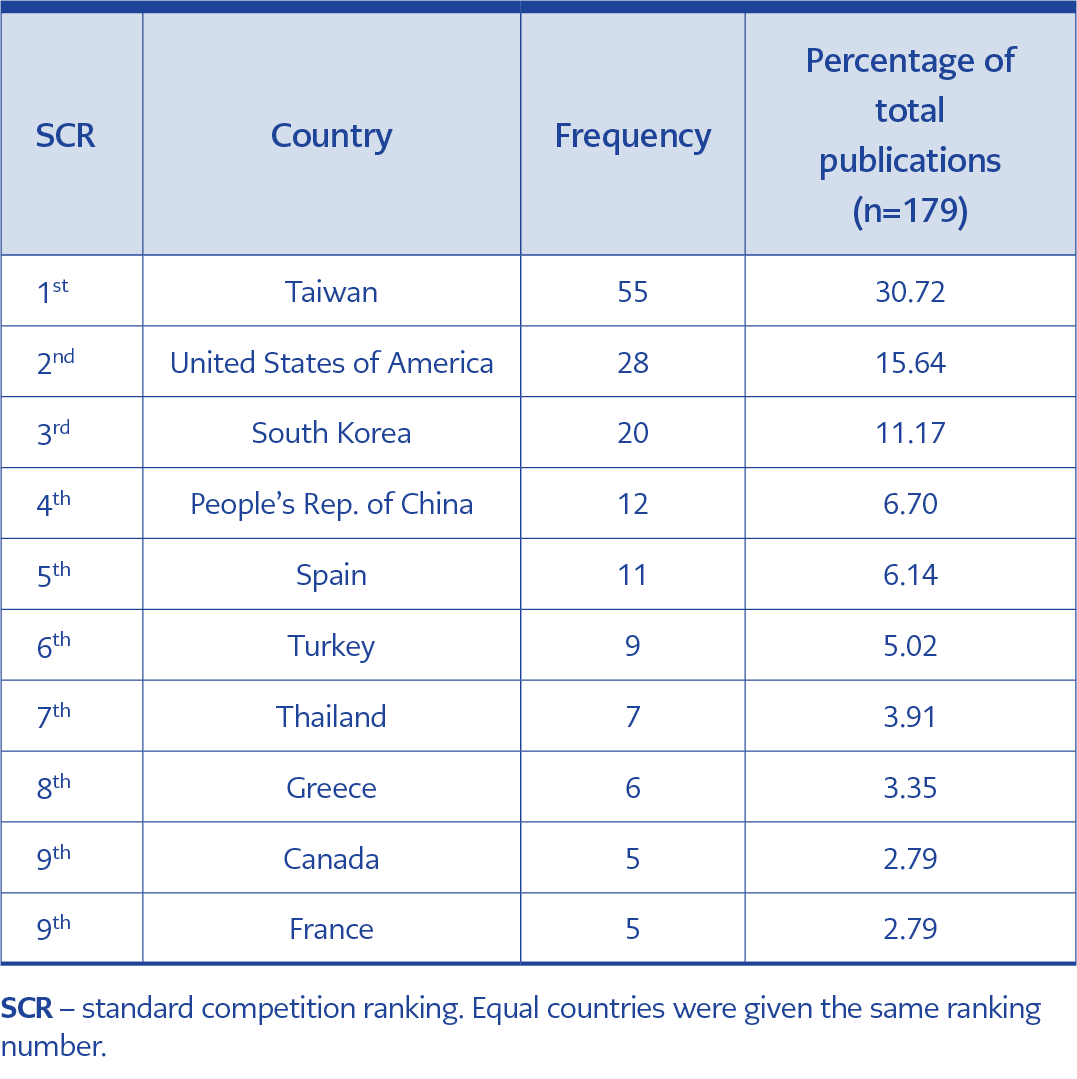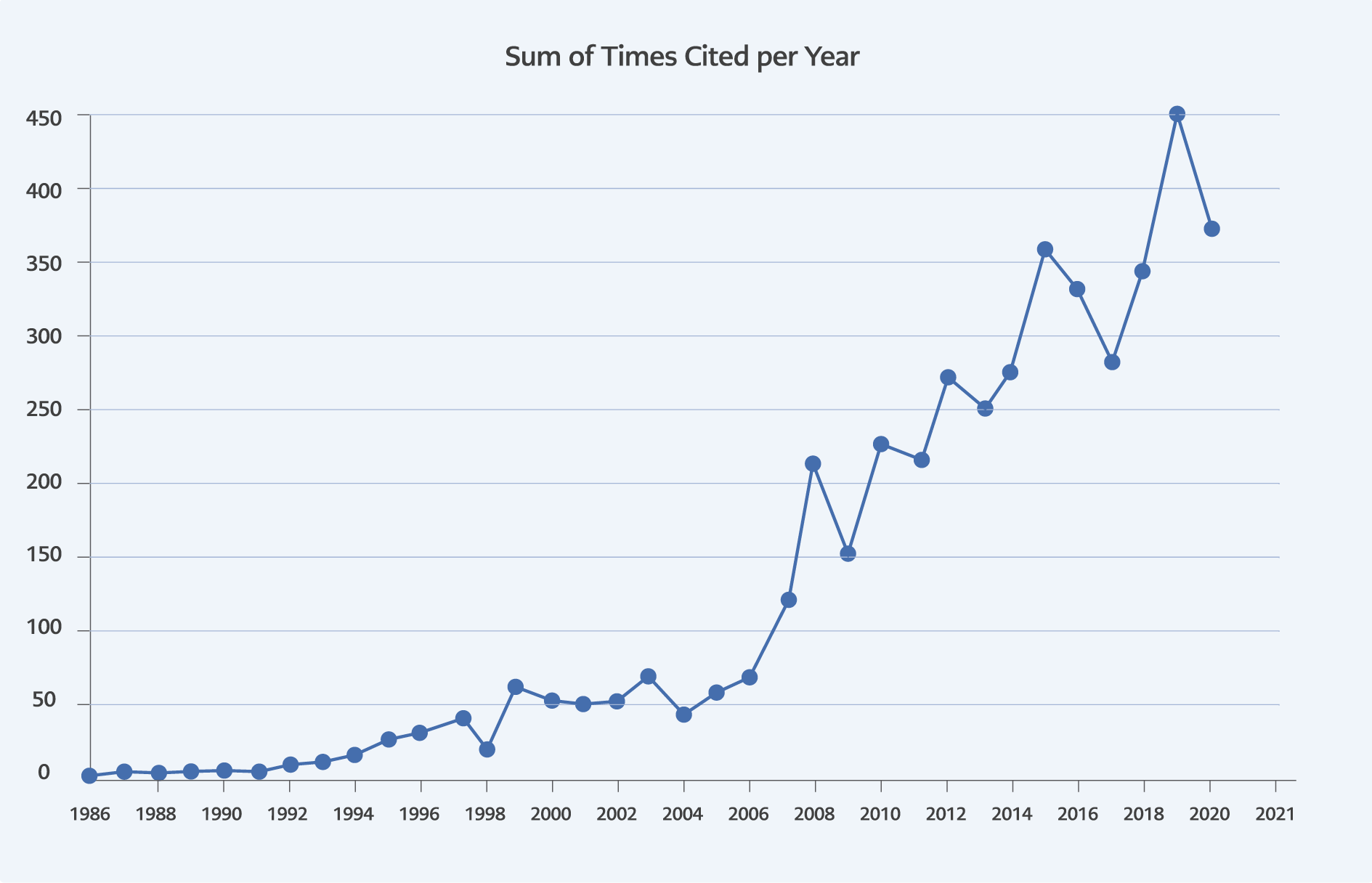Introduction
Acinetobacter species are gaining resistance to antibiotics, and they became one of the most important pathogens causing healthcare-associated infections (HAI) (1). It causes mortality up to 40%, especially because of increased antibiotic resistance (2,3). We aimed to investigate the publications in scientific journals on Acinetobacter bacteremia, which significant morbidity and mortality.
Materials and Method
Data source: This study was carried out to retrieve data from the journals indexed in the Web of Science (WOS) database. Data were retrieved from the Science Citation Index-Expanded (SCI-E) of the WOS database (https://www.webofknowledge.com). Comprehensive bibliometric data and the SCI-EXPANDED, SSCI, A & HCI, CPCI-S, CPCI-SSH, BKCI-S, BKCI-SSH, ESCI indexes database were retrieved from the Web of Science (WOS) Core Collection, which is considered as the optimum database for bibliometrics in previous studies (4-6).
Search strategy and data collection
The dataset from January 1970 to December 31, 2020, was obtained from the WOS Core Collection. The selected keywords used in the WOS database were those related keywords ‘Acinetobacter’ and ‘bacteremia OR sepsis’. Language = English AND Document type = ‘Article’ were included.
The titles, years of publication, names of authors, nationalities, affiliations, keywords, names of publishing journals, abstracts of each record, and citations within the publications downloaded from WOS were saved as TXT files and imported into Microsoft Excel 2019.
Çanakkale Onsekiz Mart University’s online library and digital resources were used to access information.
Bibliometric and visualised analysis
The Hirsch (H) index and the impact factor (IF) of the publishing journals were used as indicators of the impact of publications (4-6).
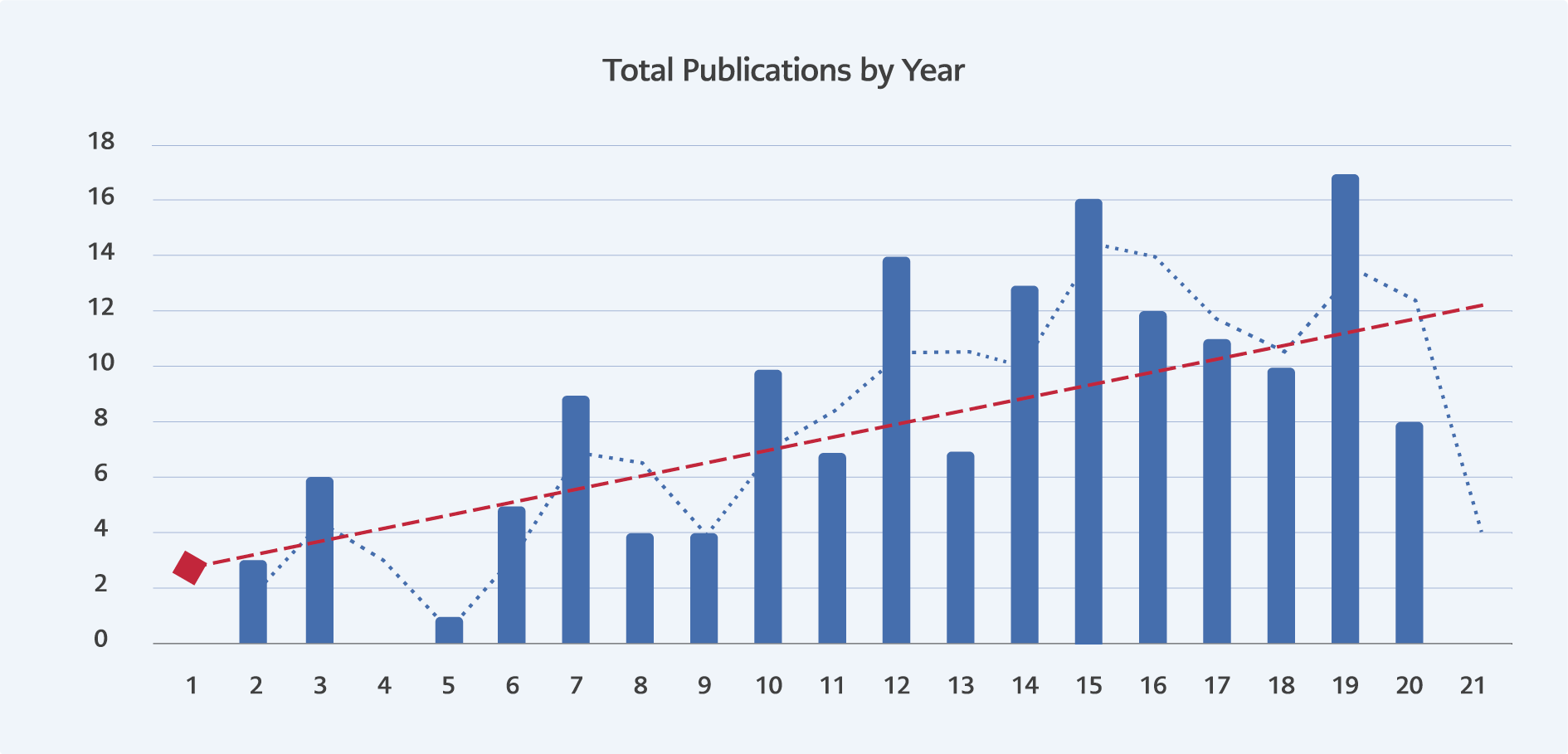
Figure 1. Total publication by years between 2001-2021. The blue dotted line expresses the median of the total value. The red dashed line expresses the trendline.
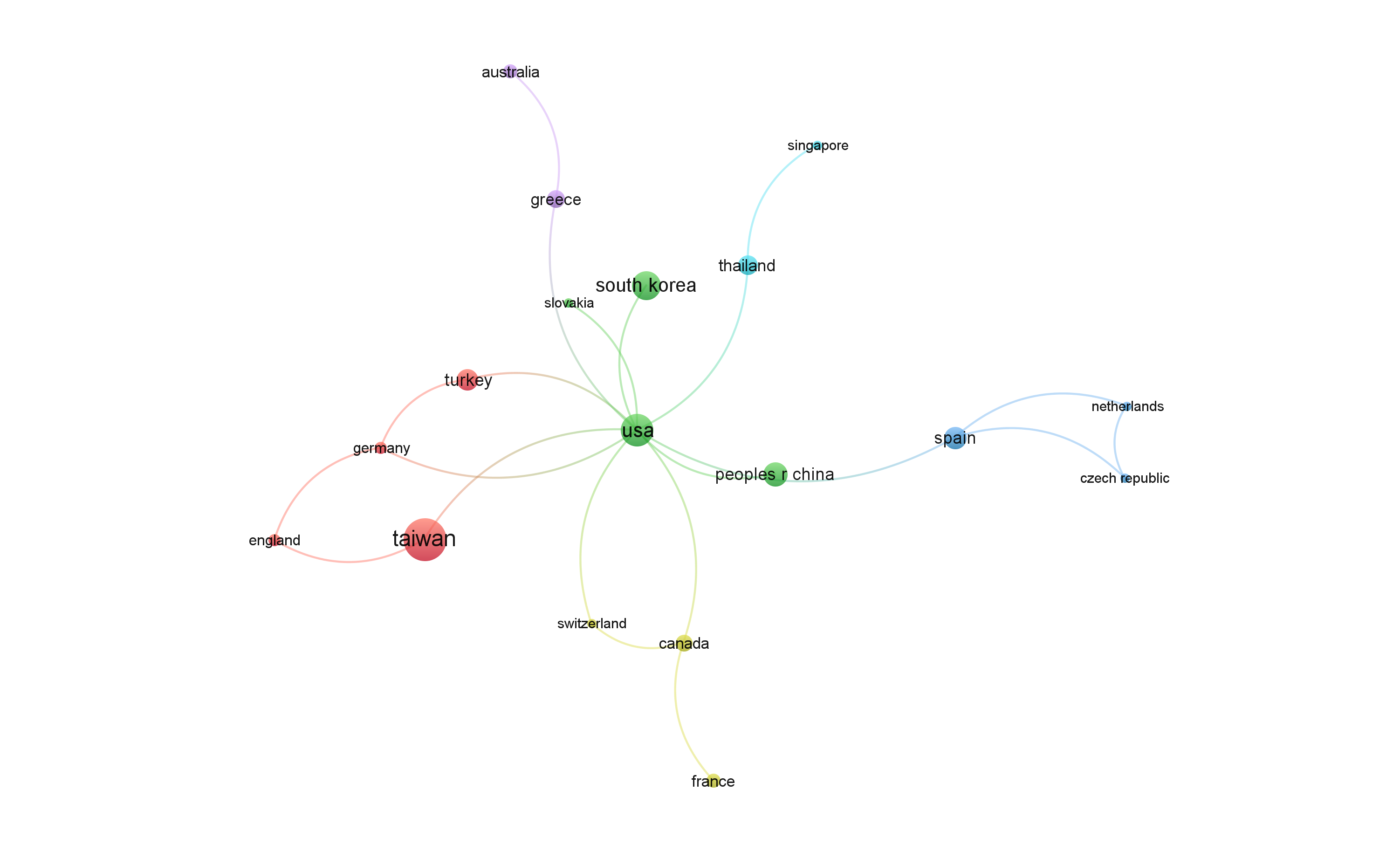
Figure 3. Network visualisation map of co-authorship among countries with a minimum of one publication on Acinetobacter bacteremia. Lines connecting countries are indicative of collaboration. Thicker lines indicate stronger collaborations. Countries represented with larger circle size or font size had relatively more international collaboration.
Analytical methods
Retrieved data were analysed to present various bibliometric indicators while maps were visualised using the VOSviewer technique. VOSviewer (Leiden University, Leiden, Netherlands) is a software tool for the visualised analysis of the publications used for bibliographic coupling, co-authorship, co-citation, and co-occurrence analysis (4-6).
Ethical consideration: Generally, in bibliometric type studies, no ethical approval was required as there is no human and animal involvement.
Results
Analysis of global publications
A total of 179 journal articles were retrieved, with an average of 24.68 citations per article. Even if the study includes the period between the years 1970 and 2020, the first article was in the year 1985.
The annual growth of Acinetobacter bacteremia articles showed an increasing pattern during the study period. Retrieved articles were written in three different languages, mainly English (n=172; 96.08%) followed by Spanish (n=5; 2.79%) and French (n=2; 1.11%).
The majority of the retrieved articles were from the research area of infectious disease (n=101; 56.42%), followed by microbiology (n=73; 40.78%), immunology (n=31; 17.31%), pharmacology (n=24; 13.40%), medicine general internal (n=20; 11.17%), public environmental occupation health (n=15; 8.38%).
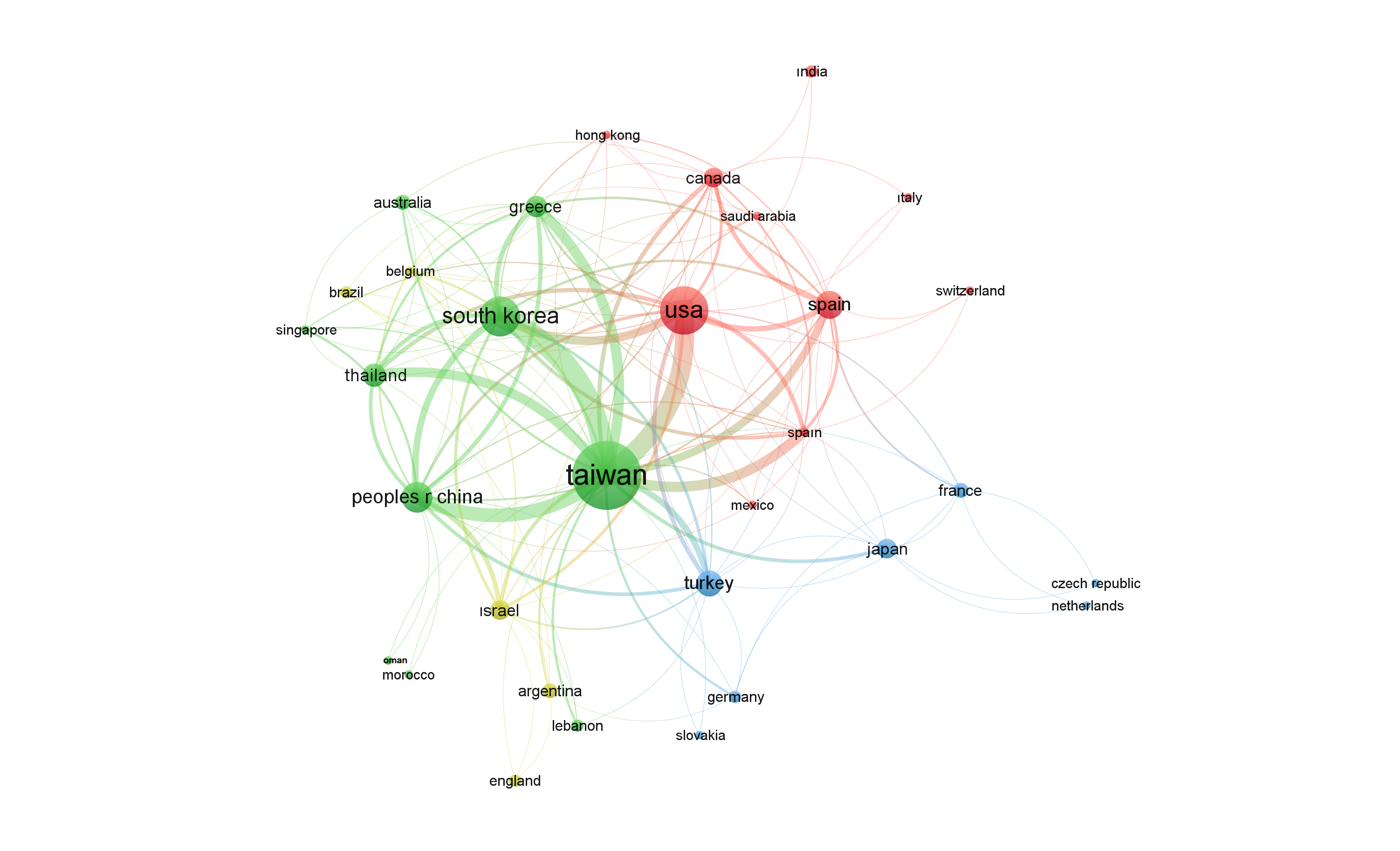
Figure 4. Network visualization map of citation among countries with a minimum of one publication on Acinetobacter bacteremia. Lines connecting countries are indicative of collaboration. Thicker lines indicate stronger collaborations. Countries represented with larger circle size or font size had relatively more international collaboration.
Active countries, institutions, and journals
The leading country according to the number of publications was Taiwan (n=55; 30.72%), followed by USA (n=28; 15.64%), South Korea (n=20; 11.17%), People’s Republic of China (n=12; 6.70%), Spain (n=11; 6.14%), Turkey (n=9; 5.02%). Other 27 countries around the globe were 24.61% (n=66). The list of active countries represents four different world regions: Northern and Southern America, Europe, Asia and Africa.
The articles were from 34 countries. The international collaboration which papers co-authored by authors from more than one country was classified as “international collaborations” carried out between 18 countries. These countries included Taiwan, the USA, Australia, England, Turkey, Germany, Greece, Slovakia, Switzerland, Canada, France, Spain, Netherlands, Czech Republic, South Korea, Thailand, Singapore, People’s Republic of China. International collaboration analysis for active countries, which must have at least one document, using the VOSviewer technique, showed 18 clusters of international collaboration (Figure 1).
Citation numbers
Retrieved articles received a total number of citations of 4417, an average of 24.68 citations per article. The H-index of the retrieved articles was 36. A total of 159 (88.82%) were cited at least once, while the remaining 20 (11.18%) articles were not cited at all. The top three cited articles on Acinetobacter bacteremia were published in Clinical Infectious Diseases (240), Medicine (188 citations) and American Journal of Epidemiology (150 citations).
Growth of citations
The annual citation growth of Acinetobacter bacteremia showed slow growth until the 2006s, followed by a dramatic increase in the last one and a half-decade. Figure 1 shows the annual growth of the citation on Acinetobacter bacteremia. The highest number of publications was seen in 2019, with a total of 443 citations (Figure 2).
While the international countries were up above, the citation analysis of the 34 countries showed that the most (Figure 3,4).
Discussion
We sought to give a bibliometric overview of the literature on Acinetobacter and bacteremia between 1970-2021, by using WOS database, which has been used in previously published bibliometric studies. We showed that publications Acinetobacter bacteremia have been increasing and growing rapidly in the past decade. Even with a low number of publications, the high H-index number indicates the importance of this subject to a variety of clinicians and researchers. Furthermore, the studies were from all over the world-this subject concerns almost all world regions. However, in the top five active countries, there were three Asian countries. Growing numbers of the study of Acinetobacter bacteremia in Asia was significant. The difference between co-authorship and citation figures showed that this subject is a global concern and needs many more international collaboration studies (co-authorship).
The current study has several limitations. The studies the in journals that were not indexed in the WOS database could not be included. Also, keywords were only in English, so publications written in other languages could have been missed. Another limitation was not including tther databases such as Scopus, Pubmed. Analyses were made only by the VOSviewer; other software such as CiteSpace II and Bibexcel) could be used in future studies.
In conclusion, publications on Acinetobacter bacteremia have been increased in recent two decades. Our study shows that the most of the publications on Acinetobacter bacteremia contributed by Taiwan, with a growing number of studies, especially in Asian countries. The rest of the world contributes a considerable share. This bibliometric analysis shows the growing numbers in Asia and the globe.
